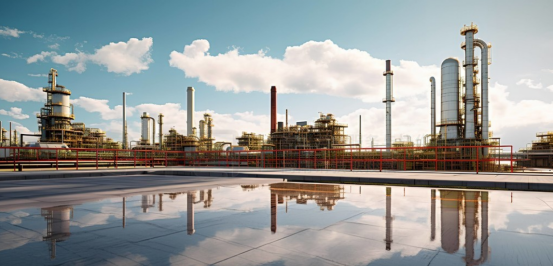Basic chemical series - dimethylacetamide
Release time:
2024-04-19
1. Introduction:
N,N-dimethylacetamide, also known as acetyldimethylamine, acetyldimethylamine, referred to as DMAC, is an aprotic high-polarity solvent, with a slight ammonia odor, strong solubility, a wide range of soluble substances, can be miscible with water, aromatic compounds, esters, ketones, alcohols, ethers, benzene and chloroform, etc., and can activate compound molecules, so it is widely used as a solvent and catalyst. In terms of solvents, as a solvent with high boiling point, high flash point, high thermal stability and stable chemical properties, it can be used for the spinning solvent of polyacrylonitrile, synthetic resin and natural resin, vinyl formate, vinylpyridine and other copolymers and aromatic carboxylic acids as solvents; N,N-dimethylacetamide can also be used as a solvent for electrolysis and photographic color formants, paint removers, organic synthesis raw materials, pesticides and pharmaceutical raw materials. Extraction, distillation solvent for separating styrene from C8 fraction, etc.

2. Physical and chemical property data:
1)Properties: colorless liquid.
2)Boiling point (ºC, 101.3kPa): 166.1
3)Melting Point (ºC): -20
4)Relative density (g/mL, 25/4ºC): 0.9366
5)Refractive index (20ºC): 1.4384
6)Refractive index (25ºC): 1.4356
7)Viscosity (mPa·s, 25ºC): 0.92
8)Viscosity (mPa·s, 30ºC): 0.838
9)Flash point (ºC, opening): 66
10)Ignition point (ºC): 420
11)Heat of evaporation (KJ/mol, 25ºC): 53.2
12)Heat of evaporation (KJ/mol, b.p.): 43.375
13)Heat of fusion (KJ/mol): 10.43
14)Heat of combustion (KJ/mol): 2546
15)Specific heat capacity (KJ/(kg· K), 20ºC, constant pressure): 2.02
16)Critical temperature (ºC): 364
17)Critical pressure (MPa): 3.9
18)Vapor pressure (kPa, 25ºC): 0.17
19)Thermal conductivity (W/(m·K), 20ºC): 0.155
20)Lower explosion limit (%, V/V, 160ºC): 2.0
21)Upper explosion limit (%, V/V, 160ºC): 11.5
3. Solubility
It is incompatible with carbon tetrachloride and other halogenated compounds. Unsaturated aliphatic compounds are easily soluble in this product, but saturated aliphatic compounds have very little solubility in this product. This product has less hydrolysis, but in the presence of acid and alkali, it can accelerate hydrolysis. This product has good stability and does not decompose during distillation. It can react with strong alkali to form acetate and alkylamine. In the presence of protons, heating can be alcoholized.
4. the use of the product
1)It is used as a raw material for synthetic fibers and an excellent polar solvent for organic synthesis; used in organic synthesis, also used as solvents, catalysts and paint removers;
2)DMAC is mainly used as a solvent for synthetic fibers (acrylonitrile) and polyurethane spinning and synthetic polyamide resins, and is also used for the extraction and distillation solvent for separating phenyl from C8 fraction, and is widely used in polymer films, coatings and pharmaceuticals. At present, it is widely used in medicine and pesticides to synthesize antibiotics and pesticides.
3)It can be used as a catalyst for reaction, electrolytic solvent, paint remover and a variety of crystalline solvent adducts and complexes.

4)Used as solvent, paint remover, catalyst and organic synthesis.

5. Preparation method
1)Acylation reaction of acetic anhydride dimethylamine and acetic anhydride at 0-20 °C, and then neutralization and removal of acetic acid with liquid alkali at low temperature, separation of sodium acetate, neutralization solution and then alkali washing, rectification, and the boiling range of 164-166.5 °C fraction is taken as the finished product.
2)Dimethylacetamide can also be prepared by the acetyl chloride method, which reacts dimethylamine with acetyl chloride. Compared with the current acetic anhydride process in China, the production cost is reduced and the economic benefits are improved.
3)Acetic acid methodFushun Chemical Equipment Research Institute adopts acetic acid and dimethylamine synthesis method, and has achieved good results. The process is characterized by the use of advanced catalytic reaction distillation technology, so that the reaction is strengthened, the energy consumption is reduced, the separation effect and product yield are greatly improved, and the process is simplified. Compared with the acetic anhydride synthesis process, the production cost is reduced and the economic benefits are improved. China is currently multi-used.
4)Carbonyl synthesis: A method for carbonylation synthesis of trimethylamine and carbon monoxide to generate N,N-dimethylacetamide was studied in France. Iron, cobalt, nickel iodide or bromide are used as catalysts in the reaction.
5)Add 1L of diethyl ether to a 2L flask, cool it with ice water externally, first introduce 95g of dimethylamine (containing 30% pure dimethylamine), and then slowly add 78g of acetyl chloride and 400ml of ether mixture under stirring, and there is a white solid (for dimethylamine hydrochloride) immediately after adding , filter out the solid, wash once with ether, combine the filtrate and the wash, recover the ether in a water bath, dry the crude dimethylacetamide with anhydrous potassium carbonate, filter out the desiccant, and distill to collect the fraction at 165.5~168 °C, which is the finished product. [1]
6. Protective measures
The workshop should be ventilated and the production equipment should be sealed. When working in places with high vapor concentrations, use organic vapor respirators or air-fed respirators, wear gloves and protective clothing to prevent skin absorption. Wear eye protection to prevent splashes in your eyes. When working in places where there is splashing or spilling, care should be taken to remove wet work clothes immediately and thoroughly wash the contaminated skin surface. Workers are given clean work clothes before going to work every day, and showers are carried out after work.
RELATED NEWS
Copyright © Nanjing Shundajie Chemical New Materials Co., Ltd. Powered by www.300.cn











